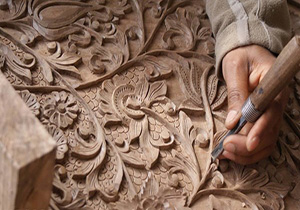Your cart is currently empty!
Monabat Kari, also known as Persian wood carving, is one of the oldest and most refined traditional arts in Iran. This craft involves the intricate and detailed carving of wood to create patterns and designs, often with floral, geometric, or calligraphic motifs. The art has a deep history, dating back to the Sassanid period (224–651 AD), but it truly flourished during the Safavid era (1501–1736 AD), a time of cultural renaissance in Iran.

In Monabat Kari, artisans carefully select high-quality woods like walnut, beech, or cypress for their fine texture and durability. They then use small, specialized tools to carve the wood with great precision, often creating highly detailed surfaces that range from simple decorative pieces to more functional items such as doors, furniture, or window frames.
The designs in Monabat Kari are not only beautiful but also symbolic, often representing nature, life, and Persian spiritual or religious motifs. Floral patterns, leaves, arabesques, and verses of Persian poetry are common elements in the carved work, adding layers of meaning and artistic depth.
Today, cities like Isfahan and Shiraz remain prominent centers for Monabat Kari, where skilled artisans continue to produce both traditional and modern works. These wood carvings are not only prized for their craftsmanship but also seen as cultural artifacts that preserve and celebrate the heritage of Persian artistry.
Monabat Kari serves as a bridge between the past and present, a craft that has evolved yet stayed true to its roots, keeping alive one of Iran’s most beautiful and intricate forms of art.
